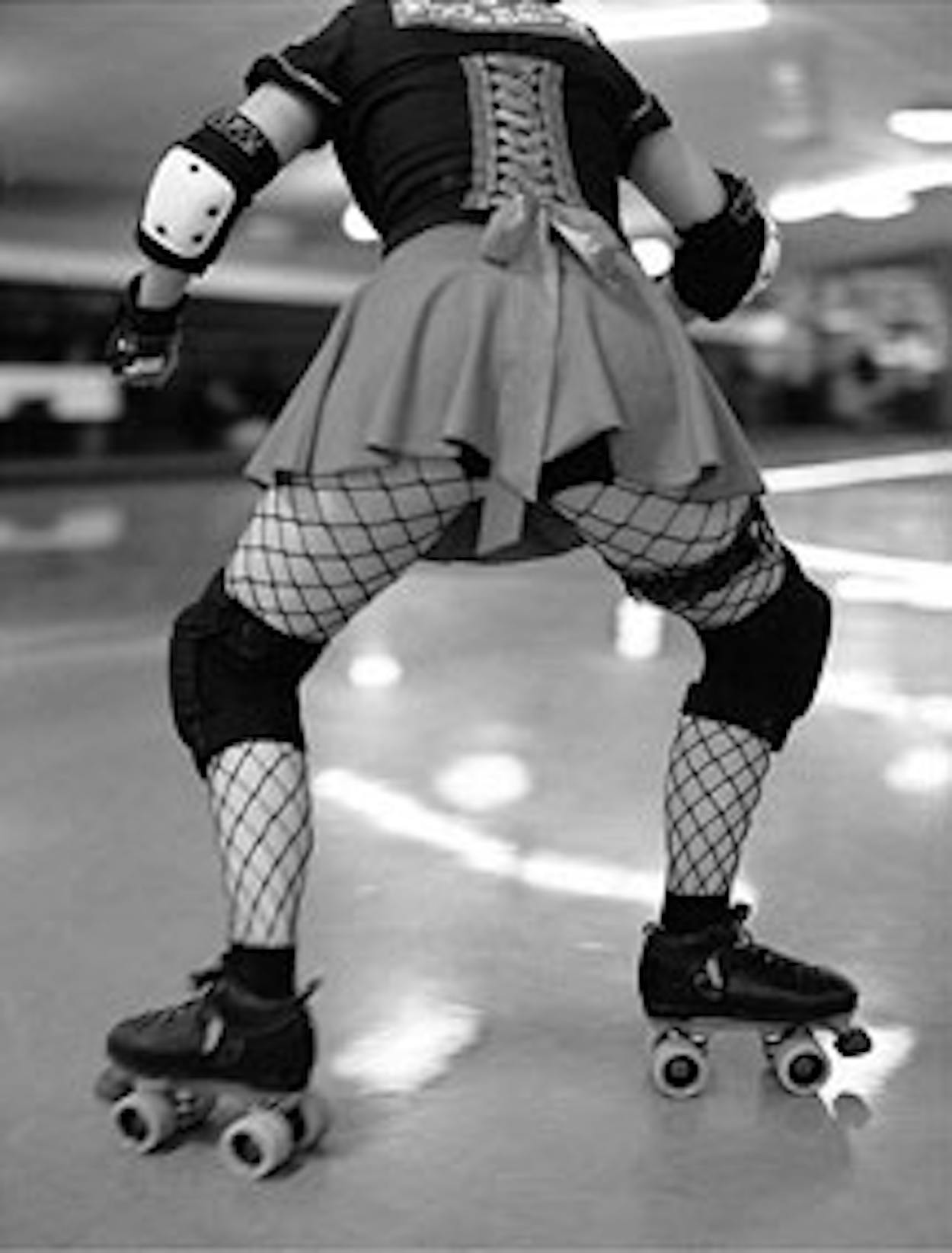When the newly revived retro-sport of roller derby reached Houston, around 2005, Bayou City native Shelley Calton was on hand with her camera and curiosity. In Hard Knocks: Rolling With the Derby Girls, she has lovingly captured the grit and glamour of these helmet-wearing, fishnet-clad women of the track.
When and how did women’s roller derby get on your radar? I first learned of roller derby’s resurgence on a radio advertisement I heard while visiting Austin in 2002. I had a fleeting thought about starting a new project, and I relished the idea of photographing a diverse group of women athletes in risqué clothing. However, the distance would be an obstacle. Three years later, I read an article in the Houston Chronicle about the launch of a league in Houston. I called April Pesillo, a.k.a. Knocky Balboa, who was interviewed in the article, and asked her if I could attend a practice session. The skaters’ enthusiasm and passion for the game was infectious, and I was hooked straight away.
Which was more compelling—the visual potential or the entertainment value? While in many respects you cannot have one without the other, the visual potential was more compelling. My favorite place to photograph was in the dressing rooms, where transformations occurred. I arrived hours before a game and stayed long after to get these shots. In the dressing rooms, these otherwise moms, professionals, teachers, and bartenders would make preparations for their alter egos to take over: Makeup was applied, hair was sprayed, fishnets and bustiers were donned, and skates were laced. After the bouts, the players returned to the dressing room exuding such intriguing energy and emotions that I felt compelled to capture the images.
Can you estimate how long you worked on the project and how many exposures you shot? Describe a typical shoot. I started shooting in 2005, initially at practices, fundraisers, and an exhibition bout. The first game was not held until early 2006, and I continued through 2008. I shot approximately ten rolls of 3200 print film per event, a total of about three hundred rolls. I used an analog medium format Contax camera, which is more complicated than the digital cameras used by many derby photographers. A day of shooting began in the late afternoon in the dressing room and then at warm-ups. I took formal portrait shots just before the skaters entered the rink with an old Graflex 4×5 camera loaded with Polaroid type 55 film—unfortunately this film no longer exists. During the games, I spent a good portion of my time around the benches to capture the emotions of the skaters as they watched and cheered. Filming from inside the rink and along the sidelines was an adrenaline rush and often dangerous; I kept one eye on the skaters flying by and one eye on my camera viewfinder. Many times, skaters crashed and landed in my lap.
How did the nature of the project change as you and the skaters got to know one another? Initially, I felt a bit awkward. I was apprehensive about fitting into their world, due to an age gap and because I was from the conservative burbs. But the skaters were open from the beginning. We all became very comfortable with one another, which allowed me behind the scenes. I showed them images from previous shoots, and they got that I was serious; the prospect of the book also excited them. Toward the end of the project, I knew I had made friendships that would carry on for many years and outside the rink.
What didn’t make it into the book that you wish could have been included? I submitted 69 images to the publisher, and 61 made the cut. There was only one image I would have liked to have in the book. It was titled Writing Knocky, and it was a very comical image: A well-endowed skater was revealing her cleavage and simultaneously writing “Knocky” on another player’s uniform. Some of the formal portraits did not turn out as I had hoped, and therefore didn’t make my cut.
What different jobs and lifestyles do the derby girls pursue outside the team? They are a diverse group of skaters, which is a fringe benefit for me as a photographer. Their professions run the gamut: stay-at-home moms, bartenders, teachers, lawyers, nurses, and others.
Are the bouts as grueling as they appear? Absolutely. The girls train rigorously for this tough competition. Injuries include broken bones, dislocated shoulders, bruises, and track rash—a carpet-burn-like injury that results from falling on the track in fishnets.
Did you ever put on the pads and take a couple turns around the rink? I did. At one practice, I borrowed some protective gear and skates and hit the rink. I was a weekend rink brat in my youth. The girls were shocked I knew how to skate, and several teams wanted to recruit me. I wished I had the courage to join them.
Do the league owners worry that some might find the tongue-in-cheek innuendo—such as skater aliases like “Panty Raider” and “Becky Booty”—sexist or offensive? The league is made up of do-it-yourself, skater-owned teams, and the skaters create their own names. The innuendos are part of the derby mystique and the crowds applaud them.
What one thing surprised you most about the derby and the skaters? I initially thought I would simply photograph a group of fun and rowdy girls. So I was surprised by how much I came to respect the skaters. Their dedication and courage is unwavering and empowering. I, in turn, gained the courage and freedom to let the person inside of me out. Kehrer Verlag, $38







